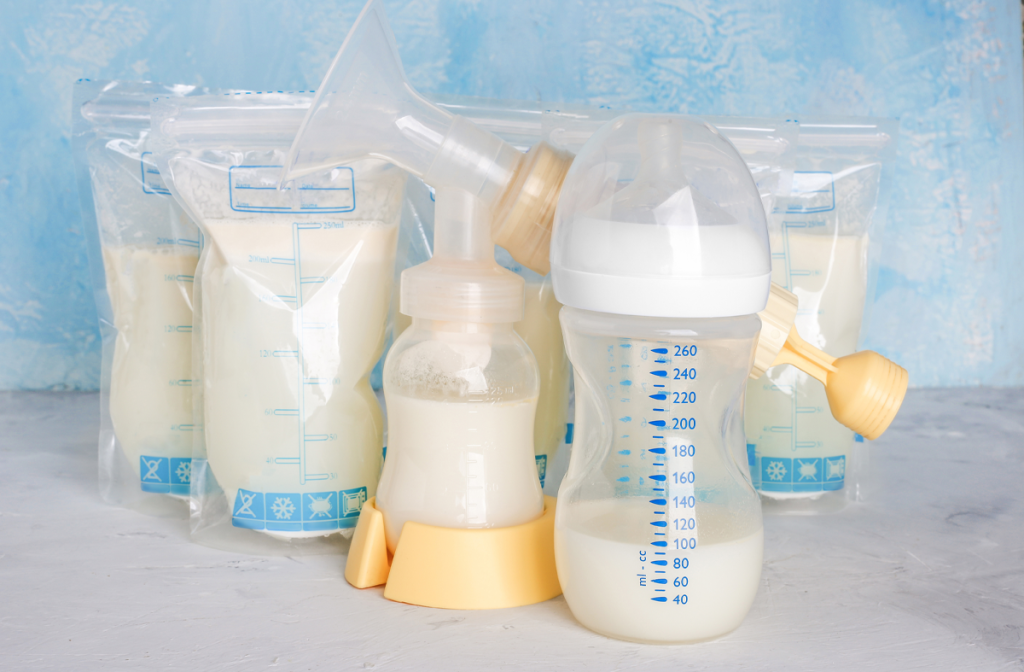
If you’ve recently begun your breastfeeding journey, you’ve probably already realized just how precious each ounce of breast milk is. It’s often called “liquid gold,” and for good reason—it’s packed with nutrients that are tailored specifically for your baby. Storing breast milk properly ensures that your baby receives all the benefits of your hard work and dedication, no matter when they’re being fed.
Here’s a helpful guide to the essential dos and don’ts of storing breast milk, giving you peace of mind that your milk stays fresh and safe for your little one.
Always store your breast milk in clean, BPA-free containers designed for milk storage. You can use glass bottles, hard plastic containers, or pre-sterilized breast milk storage bags specifically designed for freezing. This helps to keep the milk safe from contaminants.
It’s important to keep track of when the milk was expressed. Label your storage containers with the date and time of expression, and if you’re pumping at work or while on the go, consider labeling with your baby’s name as well—especially if the milk will be stored in a shared space.
Store milk in small portions, typically between 2 to 4 ounces per container, to avoid wasting milk. Babies don’t always finish larger amounts, and once warmed, leftover milk needs to be discarded within a couple of hours.
This simple rule can guide you in safely storing breast milk:
Practice “first in, first out.” Always use the oldest milk first to ensure it stays fresh and to avoid wasting milk. Rotating your supply is key to proper milk management.
Once breast milk has been thawed, it should never be refrozen. Use thawed breast milk within 24 hours if stored in the refrigerator, and discard any leftover milk after feeding.
The temperature in the door of the refrigerator or freezer fluctuates more than in the main compartment. Always store milk in the back of the fridge or freezer where the temperature is most stable.
Overheating can destroy vital nutrients in breast milk. Never microwave your breast milk as this can create hot spots that can burn your baby’s mouth and damage the milk. Instead, gently warm milk by placing the sealed container in a bowl of warm water or by using a bottle warmer.
When storing milk, avoid mixing freshly expressed milk with milk that’s already been chilled or frozen. Cool freshly expressed milk in the fridge before combining it with previously stored milk to maintain the quality and safety of the milk.
If you leave breast milk out for too long at room temperature, harmful bacteria can grow, which makes the milk unsafe for your baby. Always follow proper storage guidelines, and don’t take chances when it comes to your baby’s health.
When it’s time to use stored breast milk, you can thaw it in the refrigerator overnight or by running it under warm water. Make sure to swirl (not shake) the bottle or bag gently to mix in any fat that may have separated during storage. Once your milk has been warmed, it should be used within two hours.
Properly storing breast milk is essential to ensure your baby gets all the nutrition they need, even when you’re not physically there to feed them. Whether you’re freezing milk for later or prepping bottles for the day ahead, these tips will help you manage your milk supply easily and confidently. At Pumps For Mom, we’re here to support you in your breastfeeding journey with top-quality breast pumps and accessories. Contact us today to see if you qualify for a free breast pump and start your journey toward comfortable and efficient breast pumping.
For more information and to explore our range of breast pumps, visit our blog and read our detailed guides and product spotlights to make an informed decision.